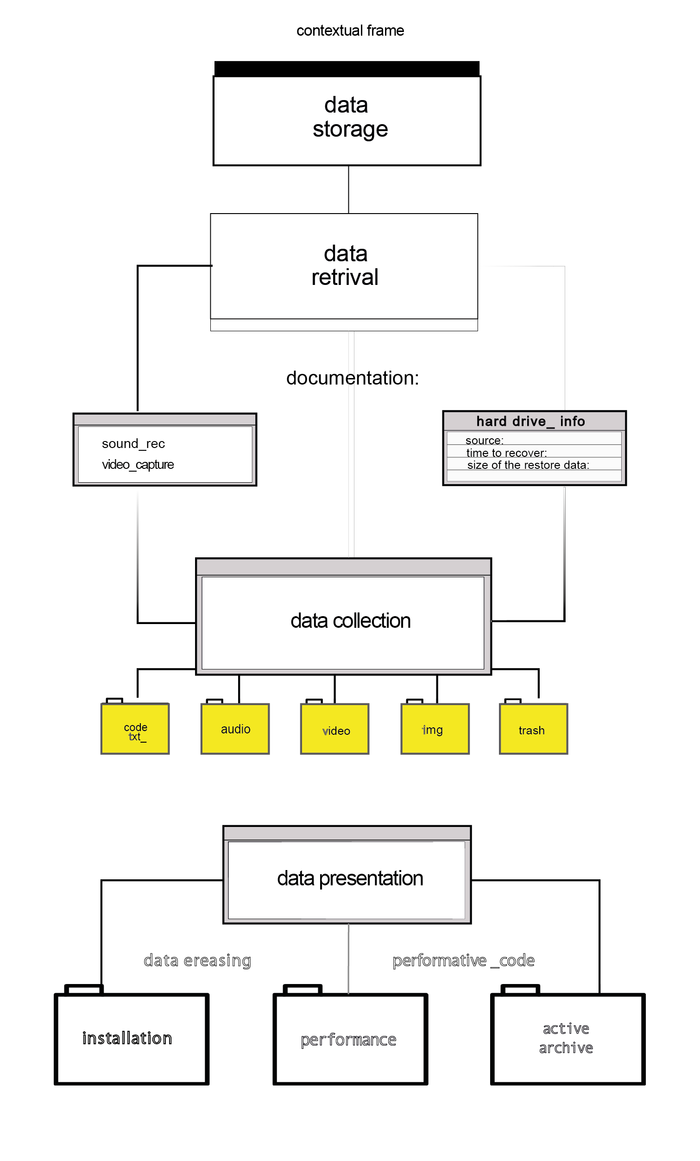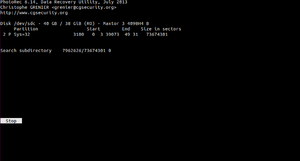User:Michaela/Worklog: Difference between revisions
No edit summary |
No edit summary |
||
| Line 10: | Line 10: | ||
<h2>Discoveries </h2> | <h2>Discoveries </h2> | ||
The material I found so far is rich source of various items: personal images, videos ( family portraits, old amateur videos - dating from the late 70s - 80s, assigned to various trips) | The material I found so far is rich source of various items: personal images, videos ( family portraits, old amateur videos - dating from the late 70s - 80s, assigned to various trips). | ||
Some of these files are usually corrupted movie files failing to succeed to the recovery process. | Some of these files are usually corrupted movie files failing to succeed to the recovery process. | ||
[http://pzwart3.wdka.hro.nl/~mlakova/data_erasure/%5BData_VIDEO_SUPER8%5D/screenshots/ screenshots HERE] | |||
*'''The factory set''' is a 23 min long video documentation of factory for pineapples in Ghana. | *'''The factory set''' is a 23 min long video documentation of factory for pineapples in Ghana. | ||
Revision as of 10:56, 27 November 2013
Description
This project I am collecting discarded hard drives and retrieving data traces out of them in order to examine abandoned data and leftover traces. A collection of ten hard drives was purchased as a commodity on Marktplaats. The hard drive rather obsolete object serve as an ultimate storage of data, container of past and present, which could be also invade, investigate and dissected.
The traces of information are exponential they contain various sources ..they travel, scattered being trade or serve as a found footage for artistic intervention.
This experiment is trigger by the idea of how the data trace is permanent - obedient, could not be not destroyed or erased completely. It has been encapsulated within time, the code and the medium itself.
How the act of disclosure is already a critic?
I am interested in the ethical aspect or who has the right to retrieve someone's data?
Or who owns the ownership of this data?
In my research I am looking at the general themes of digital waste, e-waste... data erasure – the physically destruction of data as the ultimate mode of complete erase.
Discoveries
The material I found so far is rich source of various items: personal images, videos ( family portraits, old amateur videos - dating from the late 70s - 80s, assigned to various trips). Some of these files are usually corrupted movie files failing to succeed to the recovery process. screenshots HERE
- The factory set is a 23 min long video documentation of factory for pineapples in Ghana.
The camera follows the production line of workers assembling pineapples, scene by scene every detail of the process. The moving images are rich by their source of origin, revealing highly graphical, dense scene of workers in factory motionless in their every day basics, just performing repetitive actions. The images serve as a data trails, conveying the trace of the failure of the recovery process, signed for being "broken" or interrupted. Sometimes the freeze of the frame creates conscious break from the meditation, but also suggest that the footage has been manipulated.
--> screenshots of the footage could be found HERE
Meta data missing
In this case there is no actual meta data...only evidences of time and space, found in the real footage or rather assigned from the quality of the footage itself. In this concept the tag is missing. The viewer could add an extra layer of the unknown time and space of when and where they took place.
For instance in the video of the factory workers there is an evidence of the place or a distinguish sign of the company name: Tongu fruits GHANA LTD, which could serve as tracking trace or geotag.
How I can feed it back into the system of trace?
---
---
---
Michael comments_tutorial 19.11.2013:
Think about the grey zone nothing has been done in this field. It might lead to interesting research.
Show the degradation of the object the hard drive itself. You can constantly examine the hard drives.
In case of you want to publish it /make it available online you can look at the notion of permissions or assigned different permission to use the data.
For example a common practice in archives is to have a flag of content. For instance the red color, permission denied ( or the user has not give permission to use his/her data)
yellow- somewhere in between --->
green - you have a green card to use the data . What that usage will consist of ?
content of a loose narrative // or the choice how you can show the data by not showing it completely.
ex:
David comments tutorial 20.11.2013:
The material is rich you should be present while you are making a decision. What standpoint you' re taking the political vs anthropological? The ethical issue you are facing is relevant only for the personal data not for the rest of the material, where the The project it is not just an archive... I am fascinated by the idea of erase how you can accomplish the idea of erasure in the work you are making ... Keep the images "broken" or the way how they are, as a result from the data recovery.
Methodology for data recover
Used Tools
PROCESS
The process of data retrial could be seen -->
HERE
The sound of the Hard drive could be listen -->
HERE
TestDisk undeletes files from FAT, NTFS, exFAT and ext2 filesystem.
PhotoRec is an an open-source tool for data recover lost files, including video, documents and archives from hard disks.


